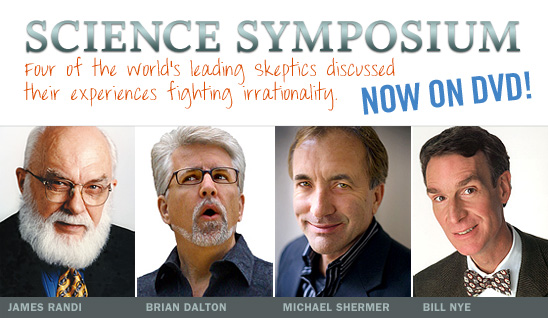In this week’s eSkeptic:
See Steven Pinker on October 23rd
The Better Angels of Our Nature:
Why Violence has Declined
Sunday, October 23, 2011 at 2 pm
BECKMAN AUDITORIUM
FACED WITH THE CEASELESS STREAM OF NEWS about war, crime, and terrorism, one could easily think we live in the most violent age ever seen. Yet as the Harvard University psychologist and New York Times bestselling author Steven Pinker shows in this startling and engaging new work, just the opposite is true: violence has been diminishing for millennia and we may be living in the most peaceful time in our species’ existence. For most of history, war, slavery, infanticide, child abuse, assassinations, pogroms, gruesome punishments, deadly quarrels, and genocide were ordinary features of life. But today, Pinker shows all these forms of violence have dwindled and are widely condemned. How has this happened? Find out at the lecture!…
Tickets are $10 Skeptics Society members/Caltech/JPL community; $15 everyone else. Tickets may be purchased in advance through the Caltech ticket office at 1-626-395-4652 or at the door. Ordering tickets ahead of time is strongly recommended. The Caltech ticket office asks that you do not leave a message. Instead call between 12:00 and 5:00 Monday through Friday.
Science Symposium Now on DVD
Our 2011 Science Symposium was a rare opportunity to hear four of the world’s leading Skeptics discuss their experiences fighting irrationality and promoting science, and what you could do to help! Speakers included: Dr. Michael Shermer, James “The Amazing” Randi and special guests: Bill Nye the Science Guy® and Mr. Deity (Brian Keith Dalton).
Missed the Symposium? Get the Lectures on DVD!
For those of you who could not make it to the Symposium earlier this year, you can now purchase all the lectures on DVD:
- The Believing Brain, by Michael Shermer
- On Science Religion & Morality, by Michael Shermer
- The Future of Science, Technology, and Education, by Bill Nye and James Randi
- The Belief Changing Kit, a 3-DVD Set with Audience Q&A
with Bill Nye, James Randi, Brian Dalton, and Donald Prothero - Mr. Deity and Friends, with Brian Keith Dalton
Watch the Symposium Q&A for free!
Five leading skeptics (Bill Nye, James Randi, Donald Prothero, Brian Dalton, and Michael Shermer) met at Caltech during the Skeptics Society’s Science Symposium to discuss their experiences communicating science to the public. Young audience members took advantage of these experts to ask excellent questions. This video includes one of the hottest topics in the skeptical community today: What is the most effective approach for educating the public and promoting skepticism, science, and critical thinking skills—confrontation, or a more gentle and respectful approach?
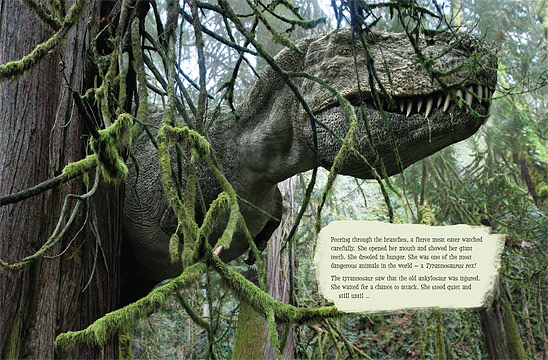
NEW FROM DANIEL LOXTON
ON SKEPTICBLOG.ORG
The Making of Ankylosaur Attack!
With the release of his new dinosaur storybook, Ankylosaur Attack!, many younger scientists (especially those aged four to eight) are asking Daniel, “How did you make these pictures look so real?” He’ll discuss that further at the Vancouver International Writers Festival next week, but gives Skepticblog readers a first glimpse behind the scenes.


Interview with
Jennifer Hancock
This week on Skepticality, Derek sits down with Jennifer Hancock to discuss her newest book, Jen Hancock’s Handy Humanism Handbook. In this work, Jen attempts to give people a quick, easy, book which describes the philosophy of Humanism and how it relates to culture and personal happiness.
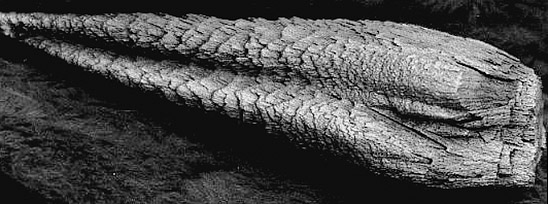
Did this mysterious artifact actually fall from a UFO as Bob White claimed?
In this week’s eSkeptic, Skeptic co-founder Pat Linse is contacted by an expert who has the expertise to solve the mystery of Bob White’s UFO artifact—an object which has long baffled both the public and the scientists who examined it. This article appeared in Skeptic magazine volume 16, number 3 (2011).
Bob White’s Great UFO
Artifact Mystery—Solved!
(Sometimes All it Takes is Finding the Right Expert.)
by Pat Linse, with Ean Harrison
Apsychic was taking phone calls on a late night radio show. His next caller was clearly upset—you could hear the fear in his voice. “I think I might be possessed” he confessed. “When I drive at night the street lights often turn off as I approach. I’m afraid it might be a warning that something terrible is about to happen.” The psychic tried to reassure him, “You definitely have some kind of extraordinary power, but it’s not necessarily negative. The lights that go out could mean that one phase of your life is over and you are about to enter a new one…”
As the psychic droned on about focusing on the positive and seeking out new opportunities, the phone lines lit up at the radio station. Dozens of people were trying to get through to offer an explantation for the ominous behavior of the street lights. They were all from one specific profession, but they were not scientists or psychologists.
The psychic’s explanation to the frightened man was suddenly cut off and a new voice came on the air. “We would like to let our listeners know that our phone lines have been jammed by people who have a very straightforward explanation for the caller’s problem. They are auto mechanics and they are all suggesting that the caller have his headlights adjusted. If headlights are aimed too high they trigger the daylight sensor on streetlights and turn them off. It’s a common problem.”
Luckily for the caller, the right experts were listening to provide a solution. Those familiar with skeptical literature are aware of James Randi’s tireless effort to point out that many supposed paranormal mysteries that have stumped scientists can be solved by the expertise of magicians.
Now another mystery has been solved with information provided by the right expert. The solution calls to mind Michael Shermer’s frequent admonition, “Before you say something is out of this world, make sure it isn’t of this world.”
Bob White’s UFO Artifact
The late Bob White’s mysterious object (see photo above) is touted on the internet as hard evidence for the existence of UFOs: “This isn’t the smoking gun—this is the bullet!!!!” And it has been included on or near the top of UFO “best evidence” lists.1, 2 In 1985, according to White’s sworn deposition, he was napping as he and a companion drove west through the desolate country between Grand Junction, CO and the Utah border. After 2 or 3 in the morning White’s friend woke him for a second time—the odd light they’d noticed before in the sky seemed to be getting bigger. White recalled:
[The light] was about the size of a full harvest moon… As we got closer, it grew larger… When we were a few hundred yards from it, I turned off the ignition and we coasted up close to it… It was huge, the size of a very big barn. I got out of the car…for a better look. For some unknown reason, Jan turned on the headlights, and this light went up in the sky as fast as my eyes could follow it… Then I saw another small light, bright orange with a tinge of yellow, white, and blue falling from it… I climbed the incline and went over to where I thought it might have hit. I found a groove in the ground about 18 inches deep and 9 inches wide. I followed the groove and there it lay… it was still glowing.3
White stashed the object in his trunk, and fearing that the story would harm his entertainment career, said nothing about it until after he retired.
From 1996 to his death in 2009, the now retired Bob White devoted himself to promoting his artifact as a piece of hard evidence for the existence of extraterrestrial engineering. His quest was not without its frustrations—his artifact, if genuine, should have been one of the greatest discoveries of all time—but he did manage to attract some media attention. He gave interviews, spoke at UFO conventions, wrote a book titled UFO Hard Evidence (Galde Press 2004), set up a small museum to house his artifact (where he is said to have offered the object for sale for ten million dollars), and was featured on a number of TV shows.
Production budgets of shows like the History Channel’s UFO Hunters, Unsolved Mysteries, and Jane Goldman Investigates (a series produced in the UK) allowed him to present the object to scientists for testing, with mixed results. While it was easily established to be made of aluminum, it had no apparent working parts. UFO enthusiasts focused on proving its extraterrestrial origin by suggesting the composition of the metal matched nothing on earth. They compared isotope ratios in the object to those of meteors, tried to establish that it emitted unusual radioactivity, or focused on inclusions and trace elements in the metal. No one seemed to wonder why a supposedly sophisticated piece of alien technology looked like it had been unceremoniously hacked off at one end.
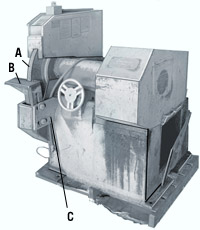
A foundry standgrinder (click image to enlarge). (A) is the grinding wheel composed of abrasive and adhesive. (B) is where the casting rests. The stalagmites form inside the grinding wheel guard (C) just behind the two large bolt heads.
Not many large stalagmites exist as souvenirs anymore because the metal is now so valuable that it is collected and sold for scrap. There is also a concerted effort to keep the grinding guards clean and remove the stalagmites before they grow so large that they break off and destroy the grinder by becoming jammed between the guard and wheel. It is possible that Bob White’s artifact was not identified sooner because few old foundries remain which use the antiquated grinding equipment that produces them. Foundry work in the U.S. has been steadily outsourced to developing nations such as Mexico, China, and India.
Expertise to the Rescue
Our expert Ean Harrison is a retired steel foundry quality control supervisor who worked in the Seattle area. Not only can he explain the origin of Bob White’s strange object, he once owned several of them and used them as garden ornaments. Harrison writes:
The object in question is made of accreted grinding residue. It forms in a manner similar to a common stalagmite when metal castings are “cleaned” on large stationary grinders. Rough castings need to have the parting line fins and gates smoothed to facilitate machining and reduce tool breakage. A typical stationary grinder in a foundry cleaning room used to hand clean castings up to 40 pounds may have a composite wheel 3 feet in diameter and 4 inches wide or larger. The casting is placed on a work guard just like the small grinder found in home workshops, and the piece is fed against the surface of the wheel, grinding off parting line fins, weld repairs, and gate bosses. The grinding dust is spewed downward into the wheel guard at a temperature near the melting point of the parent metal. When the metal dust and grinding wheel abrasive hit the bottom of the guard, the melted epoxy wheel binder glues the mixture together. Over time a stalagmite is slowly created from the bottom up, that fuses the parent metals into the characteristic form. Depending on the size of the machine, a stalagmite can easily grow to a length of 2 feet or more. Also, depending on the castings being ground, the composition of the stalagmite could be an exotic mix of stainless steel, manganese, mild steel, aluminum—in other words, a very puzzling metallurgical mix all combined in a seemingly impossible compound. But in reality it is merely a product of the melted grinding wheel binder. eventually the stalagmite grows high enough to block the opening at the base of the grinding guard. The housing must be opened, the stalagmite broken off, thrown away, recycled, used as a yard ornament, or reported as something tossed out of a UFO.
It is unfortunate so many people have been deceived into thinking an industrial waste product is concrete evidence for a UFO. But I suppose the possibility remains that an alien sailing along in a UFO was processing castings on a stationary grinder and tossed the stalagmite down at Mr. White—but one would wonder why they are still using such primitive technology.

One and two-horned steel stalagmites, each about 4 inches (10 cm) high. Foundry stalagmites come in many shapes and textures—from soft soggy oil-oozing blobs to elegant feathered needles. (A) and (B) (above) are fairly typical steel stalagmites with short scales and a coarse grainy texture. (Click image to enlarge)

Our custom-made two-horned carbide steel stalagmite exhibits long layered scales and a fine texture. An expert grinder operator took a look at a photo of the Bob White artifact and produced this otherworldly object (C) for Skeptic magazine by using an extra fast, extra hot grind of carbide steel to keep the metal and adhesive mix near the metal’s melting point. (Click image to enlarge)
Acknowledgments
Our thanks to: B.J. Mayclin of Roemer Electric Steel Foundry, Longview, WA, for supplying stalagmites (A) and (B); and to Michael Gilmore and Pat Mason for researching stalagmite production at Los Angeles area metal shops; and to Francisco Rosales for creating stalagmite (C) for this article.
Except for the top photo in this article (Bob White’s artifact), all photos were taken by Michael Gilmore, David Patton and Ean Harrison.
References
About the Authors
PAT LINSE is an award winning illustrator who specialized in film industry art before becoming one of the founders of the Skeptics Society, Skeptic magazine, and the creator of Junior Skeptic magazine. As Skeptic magazine’s Art Director, she has created many illustrations for both Skeptic and Junior Skeptic. She is co-editor, along with Michael Shermer, of the The Skeptic Encyclopedia of Pseudoscience.
EAN HARRISON is currently retired and dedicates his time to public service, organizing programs for the Cowlitz chapter of The National Institute for Mental Illness. A member of The Cowlitz County Regional Support Network Advisory Board, Harrison is currently helping establish a Cowlitz County Youth Suicide Prevention Program, and designing art therapy experiential exercises for psychotherapy interventions for people suffering from addiction and substance abuse. He holds B.A. in Environmental Design from the University of Washington. Harrison has published peer reviewed research in Environment and Behavior magazine with Phillip Thiel and Richard Alden. Foundry specialization and certification include: Quality Control Supervisor, Jarrell Ash Mass Spectrographic Analysis, Ultrasonic Analysis of Steel Castings, Metallurgy, Welding Inspection and Quality Assurance, Cleaning Room Operations, and Analysis and Reduction of Casting Defects.
Skeptical perspectives on pseudoscience and skepticism…
-
 The Skeptic Encyclopedia of Pseudoscience
The Skeptic Encyclopedia of Pseudoscience
Michael Shermer, Pat Linse, Eds.
-
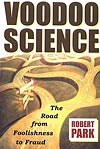 Voodoo Science: The Road From Foolishness to Fraud
Voodoo Science: The Road From Foolishness to Fraud
by Robert L. Park
-
 The Skeptic’s Dictionary
The Skeptic’s Dictionary
by Robert Carroll
-
 Believing In Magic: The Psychology of Superstition
Believing In Magic: The Psychology of Superstition
by Stuart A. Vyse



